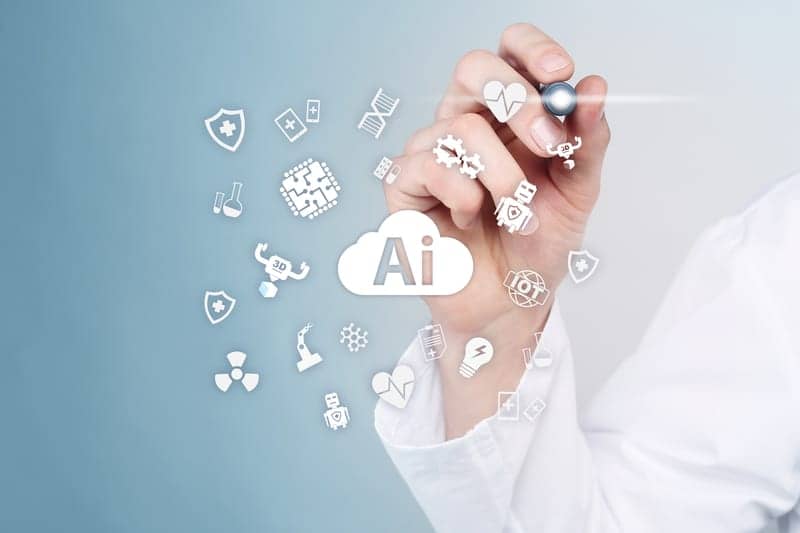As radiological imaging data rapidly grows, conventional x-ray rooms are giving way to intuitive, automated environments that increase productivity and enhance patient care.
Powered by artificial intelligence (AI), these rooms capture images that suit radiologists’ requirements, enable accurate clinical decisions, and offer consistently high image quality. Carestream’s ImageView Software meets these needs as it underpins its image capture solutions along with Eclipse, an AI-enabled image processing engine.
“The Eclipse processing engine is the computational component that sits inside of ImageView and performs the image processing necessary to create the optimal x-ray images for clinical interpretation,” says Jim Sehnert, director of data science research at Carestream.
Integrated AI components within Eclipse aim to increase the value of the entire imaging chain, from capture to diagnosis. Moreover, Eclipse powers features spanning imaging intelligence, workflow efficiency, and healthcare analytics. “Technology and artificial intelligence give a better experience for the patient and user, providing the best image possible and maximum workflow efficiency,” says David Chan, regional business director for U.S. & Canada, Digital Medical Solutions at Carestream.
Uncovering Efficiencies
Some of Eclipse’s image processing features use AI while others use traditional algorithms. Imaging intelligence offers dose efficiency and high-image quality with consistent presentation.
One area that leverages AI within ImageView is its Bone Suppression feature. Algorithms identify the bones in a chest image and process them to make them transparent. This can reveal pathology previously hidden by bony structures. Image consistency—a key requirement for radiologists—is another way ImageView software uses AI.
“What radiologists want to see in chest imaging is consistency,” says Chan. “They want to see the image in the right way every single time. There are aspects of the patient condition that you need to take into consideration, but one way we can help is through what we call a Contrast Noise Index.”
The Contrast Noise Index sets upper and lower criteria as preferred by radiologists at a facility. Carestream imaging systems warn technologists if they aren’t within those defined limits. Additionally, in chest exams, Auto Chest Correct enables radiographers to ensure the chest is oriented in the right manner.
“All this is done prior to sending the image to the radiologist,” says Chan. “Once the radiologist reviews the image, they’ll know it’s within the index they want to see.”
In acute and critical care settings where chest exams are completed for patients with inserted tubes and lines, it’s necessary to identify the position of the tube and lines. Eclipse’s Tube and Line Visualization software is specifically designed to accentuate these linear features in an image, Carestream officials say.
“These could be central lines that deliver medication to patients in the ICU or endotracheal tubes that help patients breathe, like we’ve seen during COVID-19,” says Sehnert.
Streamlined Processes Lead to Better Outcomes
Faster exams and streamlined processes lead to enhanced patient care, imaging experts say. And facilities are increasingly being tasked to do more with less at a rapid pace, making tools that reduce errors and repeated examinations extremely useful. ImageView’s anatomy clipping software, for instance, helps radiographers easily image patients of different sizes. The software detects the outline of the chest and if a portion of the chest is clipped on a captured image, a red box highlights the missing area, alerting the radiographer.
“Every facility has radiographers at different skill levels,” says Chan. “The anatomy clipping feature may be more beneficial in a teaching institution with students or inexperienced radiographers.”
Building Rooms of the Future
Carestream officials say that ImageView software has taken customers on a journey of increased efficiency and productivity. Digital radiography rooms that rely on automation to reduce imaging time, aid in accurate clinical diagnoses, and reduce workload have changed the course for the future. Automated positioning of equipment and radiology exposure, collimating an x-ray beam to the body part being imaged and improving the ability to interpret an image are just some of the technological advancements in the pipeline at Carestream, company executives add.
Healthcare analytics with dashboards for operational, business, and clinical use that would enable a facility to utilize the data, plan performance improvements, and maintain quality control are almost here. Pre-screening reports to facilitate quick and reliable decisions for patients are another way that AI is poised to transform radiology. Carestream, which develops its AI-enabled features through its Voice of Customer program, has witnessed a growing interest in these new ways of conducting radiology exams and is positioned well for future innovations, according to company officials.






